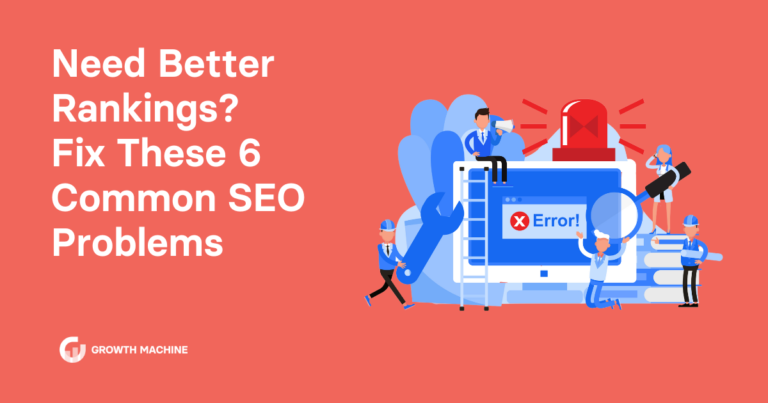How Duplicate Content Might Be Blocking Your SEO Efforts
Being a website owner in 2024 is no easy feat. Among the sea of challenges that can present themselves, duplicate content is one to put on your radar, as it can dilute your SEO efforts and diminish visibility, regardless of how amazing your content is.
Duplicate content is content that appears within the same domain in multiple places, or across various domains. It can refer to content that’s an exact copy of another piece, or shares considerable similarities (think sisters, not twins).
Duplicate content doesn’t technically lead to SEO penalties — this myth was dispelled by Susan Moska’s post on the Google Webmaster blog in 2008. The problem lies with taking scraped content from other sites and republishing it as your own, or equally as bad, republishing your own content without adding any original value.
Remember: Search engines like Google strive to provide the best search experience for users, which means showing diverse and unique results. That means if you’re relying solely on scraped content to get you to the top of the search results page, it’s time to take a new approach.
This guide will help you discover better ways to show up for your audience with fresh and useful content, and avoid running into any duplicate content problems that may arise.
Types of Duplicate Content
In your voyage into the world of duplicate content, here are two common forms you might encounter:
1. Identical Content
Identical content is exactly what it sounds like — content that is an exact copy of content found somewhere else.
These identical forms of content can exist within the same domain (internal duplicate content) or across different domains (external duplicate content).
Here are some common places you might see identical content:
- News aggregators such as Google News or Huffington Post that pull articles from across the web.
- Product descriptions copied across different pages or collections of an e-commerce site.
- Social media networks, such as Facebook, Instagram, or X (formerly known as Twitter).
- Email newsletters that repurpose blog posts in order to drive traffic back to their site.
- Industry-specific platforms such as TechCrunch.
While identical webpages don’t always result in duplicate content penalties, they can cause issues when it comes to which version is displayed in search results.
Search engines typically only show one version of the content in search results, so you want to be sure the version you prefer is front and center.
Another thing to bear in mind is that identical content can dilute link equity. For instance, other sites might link to different versions of the content in their blog posts, diminishing potential benefits from your link building efforts.
2. Similar Content
Much like fraternal twins, similar content refers to content that isn’t an exact copy, but a close look-alike.
Similar pages can appear as a result of a website’s template structure, boilerplate language or text, or even paraphrasing another site’s content.
Examples of content that looks similar but isn’t exactly the same include:
- Articles or blog posts that have been rewritten or slightly altered.
- Standardized paragraphs, such as “about us” statements or disclaimers used across webpages.
- Product pages with the same format, but slightly different details.
Today’s search engines aren’t easily fooled. In fact, they have incredibly sophisticated algorithms designed to discern and handle similar content.
The presence of large amounts of similar content can still negatively impact your site’s ability to rank, as it can confuse search engines about which content to prioritize.
How Duplicate Content Can Impact SEO
Failing to address duplicate content properly can have disastrous consequences for your search rankings. These negative consequences are referred to as duplicate content penalties.
An important clarification: As stated above, Google doesn’t dish out specific penalties for duplicate content in the way you might expect.
Instead, issues arising from duplicate content stem from algorithm filters or adjustments that affect how content is indexed or ranked. In this sense, duplicate content penalties aren’t necessarily punitive, but can still affect your online visibility.
When handled improperly, duplicate content can cause several issues for search engines:
- Confusion about which version to include or exclude from their search indices.
- Dilution of link equity due to search engines being unclear whether to direct link metrics to one page or keep it separate between multiple versions.
- Lack of clarity about which version to rank for search query results.
Aside from causing chaos within the algorithms, duplicate content can have negative effects on your website’s performance, including your SEO rankings and traffic losses.
This is because in order to provide a quality user experience, search engines will avoid showing multiple versions of the same content, as it can be frustrating for searchers.
Instead, search engines are forced to choose which version is likely to be the best result, a choice that can dilute the visibility of each of the duplicates.
Lastly, duplicate content can impact your backlink profile. When multiple links point to duplicates across your site, other sites may be unsure of where to link to, and instead link to multiple pieces, spreading the link equity among the duplicates.
Quality inbound links have a significant impact on your site’s ranking. You work hard at securing quality backlinks for SEO, so don’t jeopardize those hard-earned links by dealing with duplicates improperly.
How to Manage Duplicate Content the Right Way
Here are some strategies to help you manage duplicate content effectively and boost your SEO rankings.
Add Canonical Links or Tags
Canonicalization SEO ensures that your carefully crafted content stays intact and gets attributed to a single destination rather than being diluted across several URLs.
To get technical, canonical tags are snippets of HTML code that are placed in the <head> section of an HTML document.
By adding a canonical link, or canonical tag, you signal to search engines which version of your webpage is the preferred version. This allows variations to exist, without diluting your SEO efforts.
Set Up 301 Redirects
A redirect is a way of telling both users and search engine crawlers that an old webpage has permanently moved to a new URL.
301 redirects come in handy when moving page content around or updating your entire domain. When you move a page without a redirect, search engines treat it as a new page, which means the ranking for that page starts from scratch.
Instead of letting all that hard work go to waste, you can preserve your SEO rankings by permanently redirecting traffic to a different URL. It also preserves link equity and improves your overall user experience, so it’s a no-brainer.
URL Parameters Handling & Pagination
URL parameters (also known as query parameters) are responsible for passing data to web servers as part of a search query. They’re typically located at the tail end of a URL after the trailing slash, and followed by a question mark (?) and separated by ampersands (&).
There are a wide range of ways in which URL parameters can be used to track user behavior, organize content, or display different content based on a user’s needs.
For example, if your website has a large amount of content spread across multiple pages, you may want to consider using pagination URL parameters.
Google has stated that it no longer uses pagination link elements such as ‘rel=”prev”’ and ‘rel=”next”’ as an indexing signal, but pagination still plays an important role in helping search engines understand your site structure better.
Use Noindex Meta Tags
Noindex meta tags prevent search engines from indexing duplicate content by mistake.
For example, let’s say there’s a needed duplicate page, such as a print-friendly version of an online guide. To prevent it from being indexed, you can use a noindex tag to let search engines know that even though it can crawl the page, it shouldn’t add the page into its search index.
The ins and outs of technical SEO can be complicated, so if you’re unsure about how to manage duplicate content, hiring a webmaster or partnering with an SEO agency that understands the nuances of content marketing is your best bet.
Preventing Future Issues With Duplicate Content
When it comes to duplicate content issues, we take a similar mindset as visiting the dentist: Prevention is almost always easier than the cure.
Here are some ways you can preserve your search rankings and maximize organic traffic to your content.
1. Follow Content Syndication Best Practices
Content syndication allows you to maximize your brand’s reach by republishing content across different domains.
While it’s a great strategy to drive more traffic to your site, you must take care to follow best practices to avoid issues related to duplicate content.
Start with your own marketing channels. Check that any blogs that have been repurposed to your social media networks or email newsletters have proper internal links to drive traffic back to the original posts.
Next, communicate clearly with syndicating partners. Make sure all syndicated pieces provide a clear, visible link back to the original piece of content, and that they’ve added canonical tags properly.
2. Maintain a Clear URL Structure
Duplicate content isn’t always created on purpose. Oftentimes, it happens completely by accident.
For instance, URLs are case sensitive, so a page called “https://www.example.com/About” and one called “https://www.example.com/about-us” could be treated as duplicates, and lead to duplicate content issues.
Establish clear URL guidelines for your team or webmaster. For example, decide whether you’ll use upper or lower case, trailing slashes, or hyphens, and make sure to stick to it. URLs should be easy for both humans and search engines to understand, so keep them short and simple, using words that indicate what the content is actually about, rather than long strings of random numbers or letters.
3. Educate Your Content Creators and Team
Education is the best form of prevention. By ensuring your team understands the importance of creating unique and original content, you can avoid issues like duplication and plagiarism, and keep your rankings high.
For example, Growth Machine uses a thorough onboarding process for our content writers that covers our policies on plagiarism, AI, and more to avoid duplicate content issues for our clients. Not only does this give our clients peace of mind, it ensures that they get higher-quality content with a better shot of landing on the first page of search engine results.
4. Try a Duplicate Content Checker
With the increasing demand for fresh content paired with the growing popularity of AI tools, it never hurts to have a tool in your back pocket to help you steer clear of duplicate content problems.
There are tons of duplicate content checkers out there these days. At Growth Machine, we use Grammarly’s plagiarism checker, which can detect duplicate content from billions of pages across the web. This ensures the content we deliver to our clients is 100% original. You can find similar tools from Semrush, Copyscape, and Keysearch, just to name a few.
Make Duplicate Content Work for You, Not Against You
Understanding common duplicate content pitfalls and how to navigate them will set you up for SEO success.
If you take one thing away from this guide, it’s this: Addressing duplicate content isn’t just about winning the favor of search engines; it’s about providing a better, more engaging experience for your audience.
Contact us today to nip any duplicate content issues in the bud and secure your spot on the SERPs. Together, we’ll make your content unique, engaging, and most of all, SEO-friendly so you can start generating more traffic and conversions for your business.







